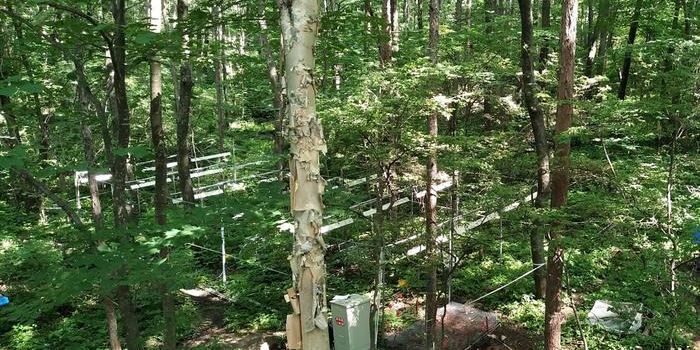Colorimetric sensor detects presence of airborne pathogens
The development of a novel colorimetric sensor may bring some mental relief to your COVID-19 anxieties. According to the new study published in Advanced Science from scientists at Gwangju Institute of Science and Technology, Korea, the sensor can detect harmful airborne pollutants.
As the name might suggest, the sensor changes color in the presence of specific agents. This sensor is unique in that it addresses some of the previous problems that colorimetric sensors have faced, such as their limited large-scale manufacturing, slow response times, and unsaturated colors.
The sensor is composed of a thin layer of viruses called M13 bacteriophages. The researchers, led by Professor Young Min Song, say "In our study, we introduced the M13 bacteriophage, which is a nanometer-sized filamentous virus, as a sensing layer owing to its volumetrically expanding properties." In other words, the virus can respond to its surrounding environment in an optical way.
Professor Song explains the technique that the team used to modify the virus so that it can detect harmful chemicals in the air, "Through optimization of the virus layer deposition, the virus layer was coated with ultra-thin dimension, which enhanced the detection rate. The HLRP ("highly lossy ultra-thin resonance promoter layer") with resonance enhancement was applied to obtain a distinct color even with a nanometer-scale thickness change in the M13 bacteriophage virus layer. Consequently, the color change was maximized by optimized resonance conditions."
They say that the new sensor also detects changes in humidity, in addition to detecting the presence of volatile organic chemicals and endocrine-disrupting chemicals. The researchers hope that these mass-producible tools one day become utilized in the clinical settings.
"In the future, advances in genetic engineering will enhance the sensitivity of the sensors and extend their applicability to the medical industry, where they could be used as diagnostic kits for detecting specific viruses and pathogens."
Sources: Advanced Science, Eureka Alert









